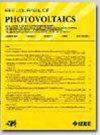Photovoltaic Module Temperature Prediction Model Incorporating Wind Direction and Precipitation Effects
IF 2.6
3区 工程技术
Q3 ENERGY & FUELS
引用次数: 0
Abstract
This study presents an innovativeapproach to estimate the operating temperature of photovoltaic modules by incorporating underexplored climatic factors, such as wind direction and precipitation, in addition to commonly analyzed variables, such as ambient temperature, wind speed, solar irradiance, and relative humidity. The research addresses a gap in the literature, improving the predictive accuracy of photovoltaic module temperature estimation models. The developed methodology is designed to integrate measurement data from any location and was validated using data collected from over two years of measurements, demonstrating that the resulting prediction model is both valid and precise. The methodology employs multiple linear regression to derive the predictive model, ensuring adaptability and accuracy across different environmental contexts. Results indicate a significant improvement in prediction performance compared to other models. This advancement supports better design and operation of distributed photovoltaic systems globally.考虑风向和降水影响的光伏组件温度预测模型
本研究提出了一种创新的方法来估算光伏组件的工作温度,该方法结合了未开发的气候因素,如风向和降水,以及通常分析的变量,如环境温度、风速、太阳辐照度和相对湿度。该研究解决了文献中的一个空白,提高了光伏组件温度估计模型的预测精度。所开发的方法旨在整合来自任何位置的测量数据,并使用从两年多的测量中收集的数据进行验证,证明所得到的预测模型既有效又精确。该方法采用多元线性回归来推导预测模型,确保了在不同环境背景下的适应性和准确性。结果表明,与其他模型相比,该模型的预测性能有显著提高。这一进步为全球分布式光伏系统的更好设计和运行提供了支持。
本文章由计算机程序翻译,如有差异,请以英文原文为准。
求助全文
约1分钟内获得全文
求助全文
来源期刊

IEEE Journal of Photovoltaics
ENERGY & FUELS-MATERIALS SCIENCE, MULTIDISCIPLINARY
CiteScore
7.00
自引率
10.00%
发文量
206
期刊介绍:
The IEEE Journal of Photovoltaics is a peer-reviewed, archival publication reporting original and significant research results that advance the field of photovoltaics (PV). The PV field is diverse in its science base ranging from semiconductor and PV device physics to optics and the materials sciences. The journal publishes articles that connect this science base to PV science and technology. The intent is to publish original research results that are of primary interest to the photovoltaic specialist. The scope of the IEEE J. Photovoltaics incorporates: fundamentals and new concepts of PV conversion, including those based on nanostructured materials, low-dimensional physics, multiple charge generation, up/down converters, thermophotovoltaics, hot-carrier effects, plasmonics, metamorphic materials, luminescent concentrators, and rectennas; Si-based PV, including new cell designs, crystalline and non-crystalline Si, passivation, characterization and Si crystal growth; polycrystalline, amorphous and crystalline thin-film solar cell materials, including PV structures and solar cells based on II-VI, chalcopyrite, Si and other thin film absorbers; III-V PV materials, heterostructures, multijunction devices and concentrator PV; optics for light trapping, reflection control and concentration; organic PV including polymer, hybrid and dye sensitized solar cells; space PV including cell materials and PV devices, defects and reliability, environmental effects and protective materials; PV modeling and characterization methods; and other aspects of PV, including modules, power conditioning, inverters, balance-of-systems components, monitoring, analyses and simulations, and supporting PV module standards and measurements. Tutorial and review papers on these subjects are also published and occasionally special issues are published to treat particular areas in more depth and breadth.
 求助内容:
求助内容: 应助结果提醒方式:
应助结果提醒方式:


